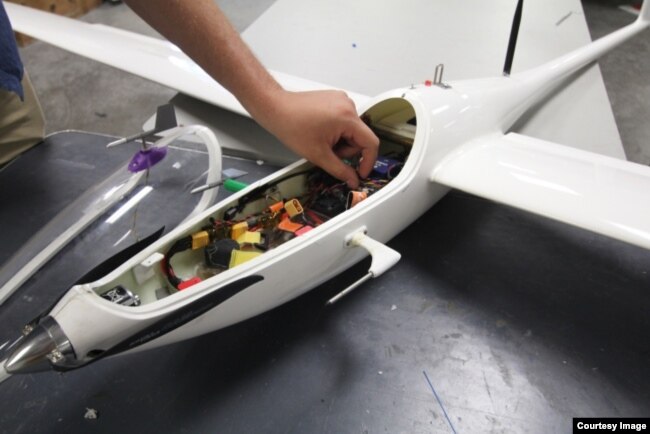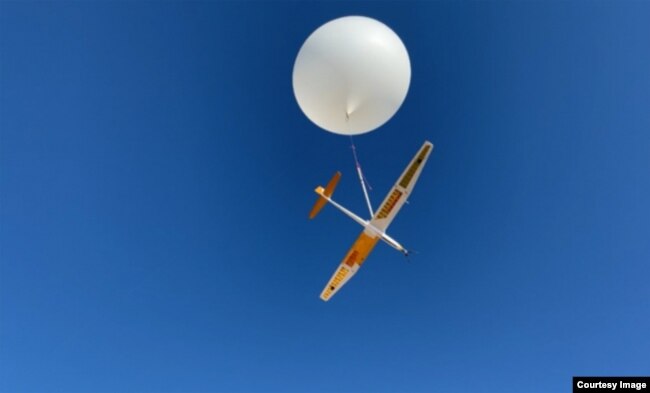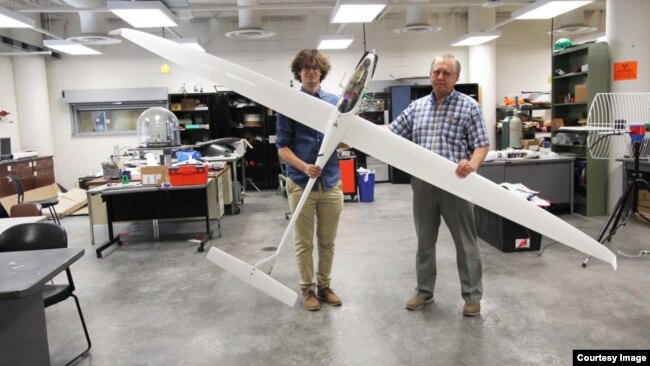火星の上空を飛行する映像を早く見たいですね!!
VOAで英語を学びましょう!!
火星上空を飛行する帆船を開発(和訳)
Researchers Develop Sailplane Designed to Fly above Mars
July 10, 2022
アメリカの研究者が、火星の上空を飛行してデータを収集するために、軽量なセールプレーンを開発しました。
モーターを使わないこの飛行機は、火星周辺の自然の風パターンを利用して、何日も運航できるように作られています。
機体には飛行センサー、温度センサー、ガスセンサー、そしてカメラが搭載されています。赤い惑星の大気や物理的な構造に関するデータを収集するために設計されています。
セイルプレーンのワーキングモデルは、アリゾナ大学のエンジニアが開発されました。このチームは、アメリカの宇宙機関NASAの研究科学者であるアレクサンドル・クリング氏と共同でこのプロジェクトを進めています。
クリング氏は声明の中で、このセイルプレーンは、NASAが火星の表面上の重要な領域を研究するのに役立つ貴重な資源になると述べています。
「地上から数キロメートルのところにある惑星境界層には、本当に重要な、重要な部分があります。これは、表面と大気の間のすべての交換が起こるところです。」と彼は言います。
クリング氏は、NASAの火星気候モデリングセンターで仕事をしています。このセンターでは、火星の現在および過去の気象・気候活動を研究するためのモデルを開発しています。
クリング氏は、惑星の上空にあるこのエリア、ゾーン、は、塵を拾って大気中に送り込む場所だと言います。また、ガス成分が混合される場所でもあります。これまでのところ、この領域に関するデータはほとんどないとクリング氏は話します。
研究者たちは、Aerospace誌に最近掲載された研究で、セイルプレーンの進捗状況を説明しています。
研究チームは、現在、火星を周回する8機の探査機と、火星表面を探査する3機のローバーが活動していることを指摘しています。しかし、これらの探査機は、火星表面直上のデータを収集する能力に限界があります。
NASAは、火星で小型ヘリコプター、インジェニュイティの実験を行っています。これまでのところ、インジェニュイティのテストは成功しています。そして、このような航空機は、セールプレーンが設計されているようなオペレーションを行うことができます。しかし、この実験用ヘリコプターは一度に数分しか飛行できず、高さも12メートル程度までしか到達できません。
この研究の主執筆者であるエイドリアン・ブスケラ氏は、「これらの他の技術はすべて、エネルギーによって非常に制限されていました。」と言います。彼は、アリゾナ大学の工学博士課程に在籍しています。
ブスケラ氏は、セイルプレーンの目的は、火星周辺の自然の風の流れを利用して、エンジン駆動の乗り物を使わずにすむようにすることだと言います。「主な疑問は、どうすれば動力なしで空を飛べるか、ということです。そこにある風をどう使うか?」とブスケラ氏は問います。彼は、他の探査機は通常、太陽からのエネルギーに依存し、動作させるためにバッテリーを必要とすることを指摘しています。
研究チームによると、開発したセールプレーンは、軽量で低コスト、そして完全に風を動力源としているということです。現在のモデルは、翼幅が約3.5メートルです。研究チームは、この飛行機は主に火星の上空を吹く垂直風を利用するように設計されていると言います。
しかし、この飛行機はダイナミック・ソアリングと呼ばれる方法も使えるようになる、とエンジニアたちは言っています。この方法は、強さの異なる気塊の境界を繰り返し越えることによって、機体がエネルギーを得ることを可能にします。このような風の活動は、火星では一般的であることが知られています。
現在の火星探査機は、主に火星の平坦な場所や砂地で画像やデータを撮影しており、着陸するのに安全な場所です。しかし、研究者たちは、このセイルプレーンは、”峡谷や火山などの地層の周りで風のパターンがどのように変化するかを利用することで、新しいエリアを探査することができるだろう”と述べています。
研究チームは、空に浮かぶ気球にセイルプレーンを取り付けてテストを実施しました。今夏には、標高約4,500mまで上昇させる実験を予定しています。また、火星の気候データをもとにした飛行計画の数学的モデリングなど、研究の幅を広げる予定です。
Researchers Develop Sailplane Designed to Fly above Mars
The nonmotorized aircraft is built to use natural wind patterns around Mars to operate for days at a time.
The plane is equipped with flight, temperature and gas sensors, as well as cameras. It is designed to collect data on the Red Planet’s atmosphere and physical structures.
A working model of the sailplane was developed by engineers at the University of Arizona. The team is partnering on the project with Alexandre Kling, a research scientist with the American space agency NASA.
Kling said in a statement the sailplane can be a valuable resource in helping NASA study an important area above the surface of Mars.
"You have this really important, critical piece in the planetary boundary layer, like in the first few kilometers above the ground," he said. "This is where all the exchanges between the surface and atmosphere happen.”
Kling works in NASA’s Mars Climate Modeling Center. The center develops models designed to research current and past weather and climate activity on Mars.
Kling said this area, or zone, above the planet is where dust is picked up and sent into the atmosphere. It is also where gas elements are mixed. So far, Kling said, very little data is available about this zone.
The researchers describe their progress on the sailplane in a study that recently appeared in the publication Aerospace.
The team notes that there are currently eight active spacecraft orbiting Mars and three rover vehicles also exploring the surface. But these research vehicles are limited in their ability to collect data on the area just above the Mars surface.
NASA has experimented with a small helicopter on Mars, the Ingenuity. So far, tests of Ingenuity have been successful. And such an aircraft could perform operations like ones the sailplane is designed for. But the experimental helicopter is only able to fly for a few minutes at a time and can only reach heights of about 12 meters.
“These other technologies have all been very limited by energy," says the study’s lead author, Adrien Bouskela. He is an engineering doctoral student at the University of Arizona.
Bouskela said the goal of the sailplane is to use natural wind flows around Mars to avoid having to use engine-powered vehicles. “The main question is: How can you fly for free? How can you use the wind that's there?” Bouskela asked. He noted that other research vehicles usually depend on energy from the sun and need batteries to operate.
The researchers say the sailplane they developed is lightweight, low-cost and completely powered by wind. The current model has a wingspan of about three-and-a-half meters. The team says the plane is designed mostly to use vertical winds blowing above Mars.
But the aircraft will also be able to use a method called dynamic soaring, the engineers said. This method permits a plane to gain energy by repeatedly crossing boundaries between air masses of different strength levels. This kind of wind activity is known to be common on Mars.
Current Mars explorers have mainly captured images and data from flat and sandy areas of the planet where it was safe for the vehicles to land. But the researchers say the sailplanes “would be able to explore new areas by taking advantage of how wind patterns shift around geologic formations such as canyons and volcanoes.”
The team has carried out tests of the sailplane by attaching it to a balloon floating in the sky. More tests are planned for this summer when researchers are expected to send the plane up to about 4,500 meters above sea level. They also plan on expanding their research involving mathematical modeling for possible flight plans based on Mars climate data.
Words in This Story
pattern – n. a regular and repeated way in which something happens
layer – n. an amount of substance covering a surface
battery – n. a device that provides and stores electricity for certain electronic devices
vertical – adj. pointing straight up from a surface
boundary – n. a line that divides two areas or forms an edge around an area
take advantage of – v. to use the good things in a particular situation
shift – v. to change or make a change in place, position, or direction


